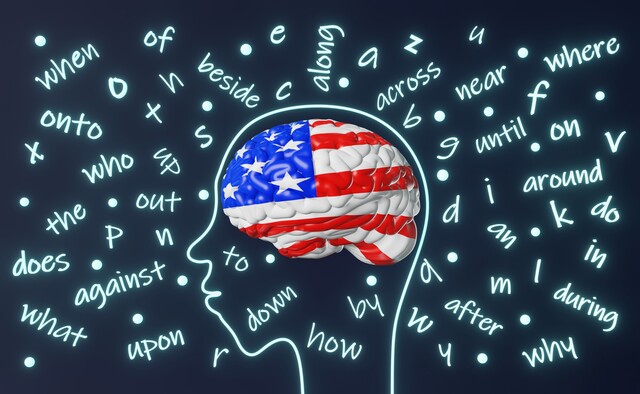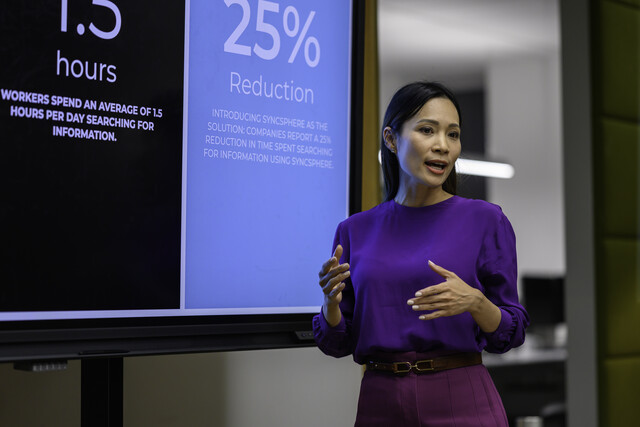Online Class: Understanding Learning Styles

no certificate
with CEU Certificate*
-
15Lessons
-
23Exams &
Assignments -
2,372Students
have taken this course -
3Hours
average time -
0.3CEUs
Course Description
Unlocking the Power of Learning Styles: Your Comprehensive Guide
Welcome to a transformative journey into the world of learning styles. Whether you're an educator, a business professional, a parent, or simply an individual with an insatiable thirst for knowledge, this course promises insights that will change the way you view learning forever.
Why is this course essential?
We live in a diverse world, where every individual has a unique way of processing information. Recognizing and understanding these variances can be the key to unlocking potential, both in academic settings and in everyday life. By delving deep into the nuances of learning styles, this course offers a blueprint for educators, trainers, and leaders to tailor their methods to match individual needs, thereby maximizing outcomes.
Here's what awaits you inside:
-
Historical Foundations: Embark on a historical exploration of learning style theory, tracing its evolution and understanding its foundational concepts.
-
Multiple Intelligences Unveiled: Dive deep into Howard Gardner's groundbreaking Theory of Multiple Intelligences. Learn how these distinct forms of intelligence intertwine with individual learning styles and influence how each person absorbs and processes information.
-
Assessment Techniques: Gain proficiency in assessing various learning styles, empowering you to customize instruction and engagement strategies.
-
Navigating Learning Challenges: Equip yourself with the knowledge to identify and address learning difficulties, ensuring every learner gets the best chance at success.
-
A Peek into Contemporary Research: Stay updated with the latest findings in the domain of learning styles. Understand how current research is shaping pedagogical techniques and offering newer perspectives.
-
Styles Explored: Delve into the characteristics and needs of intuitive learners, visual learners, verbal learners, active learners, reflective learners, sequential learners, and global learners. Recognizing these styles can be the first step in fostering an environment conducive to each learner's growth.
-
Iconic Models of Learning Styles: Explore influential models that have shaped the understanding of learning preferences, including Anthony Gregorc's Model, the Dunn and Dunn Learning Styles Model, and Neil Fleming's VARK Learning Style Model.
-
Constructivism & Its Implications: Engage with the fundamental theories of learning, such as constructivism, and comprehend their relevance in contemporary education and training.
-
Interactive Learning: Through quizzes and assessments, test your grasp of the content, ensuring a robust and comprehensive understanding of the material.
Whether you're designing a corporate training module, crafting a lesson plan, or simply looking to better understand yourself or those around you, this course will arm you with invaluable insights. By the end of your journey with us, you'll not only be familiar with the diverse learning styles but also possess the skills to cater to them, thereby fostering environments of enhanced understanding and growth. Dive in, and let's unravel the wonders of the human mind together!
- Completely Online
- Self-Paced
- Printable Lessons
- Full HD Video

- 6 Months to Complete
- 24/7 Availability
- Start Anytime
- PC & Mac Compatible
- Android & iOS Friendly
- Accredited CEUs

Course Lessons
Lesson 1. Unleashing Potential: Navigating the Spectrum of Learning Styles
The course underscores the synthesis of theories like behaviorism, cognitive theory, constructivism, and transformative learning, illustrating their role in fostering inclusive education through personalized teaching strategies. Neuroeducation, AI, and cultural cognition are discussed as transformative elements in today's digital learning landscape.Lesson 2. Exploring the Landscape of Learning Theories: A Journey Through Time and Minds
Neil Fleming's VARK Model classifies learners into four categories: Visual, Auditory, Reading/Writing, and Kinesthetic, to optimize information delivery in educational settings. By integrating this model, teachers leverage multimedia resources and interactive experiences, enhancing student engagement and catering to diverse learning styles.Lesson 3. Constructivism Unveiled
Modern educational strategies like personalized learning and the integration of technology resonate with constructivist principles, enhancing the learning experience by catering to individual preferences and promoting interactive engagement. Such innovations support a holistic view of education as an evolving, immersive journey.Lesson 4. Fostering Diverse Human Potential through Gardner's Theory
Kinesthetic intelligence is the mastery of bodily movements and coordination, evident in dancers and surgeons whose physical skills translate into compelling performances and precise operations. It bridges the cerebral and physical domains, highlighting the body's wisdom in creating and solving problems.Lesson 5. Understanding Learner Diversity for Educational Empowerment
Understanding learning styles is key to tailoring educational experiences that align with individual strengths and preferences. Through the lens of different models, the lesson underscores the potential of personalized learning to foster empowered and confident learners.Lesson 6. Exploring the Rich Landscape of Learning Styles
Understanding diverse learning styles, such as visual, auditory, and kinesthetic, allows educators to create more inclusive learning environments. By customizing teaching strategies to meet various preferences, students achieve better outcomes and develop a lifelong love for learning.Lesson 7. Diving Deep into Learning Disabilities: Causes, Types, and Solutions
Delving into the complexities of learning disabilities, this lesson sheds light on variations in reading, writing, and math processing. With an emphasis on early intervention and personalized support, individuals are encouraged to navigate and transcend these obstacles.Lesson 8. Exploring the Dynamic Spectrum of Learning Styles: Active vs Reflective
Active and reflective learning styles personalize education, emphasizing student engagement and introspection. By comparing these two approaches, educators can foster environments that boost comprehension and retention.Lesson 9. Supporting Global Learners: Strategies for Success
Rather than sequentially processing information, global learners intuitively grasp abstract concepts, excelling in problem-solving and creative environments. This lesson underscores the importance of recognizing and nurturing these distinct cognitive styles within educational settings.Lesson 10. Exploring the Spectrum of Sensory and Intuitive Learning
Tactile learning, alongside visual and auditory styles, is crucial in education. Employing multi-sensory strategies, educators can enhance engagement and comprehension across various student preferences.Lesson 11. The Craft of Sequential Learning: A Systematic Approach
Left-brain dominant sequential learners prioritize logical processes and meticulous planning, equating learning to systematic and ordered architectural design. While their inclination towards structure yields strengths in fields like IT and law enforcement, balancing this with emotional intelligence can amplify professional success.Lesson 12. Visual vs. Verbal: The Path to Personalized Learning
Exploring your unique learning style can significantly impact personal growth and career success by tailoring your educational and professional paths. Visual and verbal learning styles, though distinct, often work together to enhance learning experiences and optimize potential.Lesson 13. Harnessing Technology to Revolutionize Education: Unraveling the Impact of Digital Learning Tools in Modern Classrooms
Blogs serve as powerful platforms for reflection and academic exchange, fostering interaction and creative expression in digital classrooms. This innovative tool reimagines education as a collaborative space where learners actively participate in enriching their academic discourse and problem-solving skills.Lesson 14. Personalized Learning: Adapting Education to Unique Styles
For parents, understanding their children's learning styles helps maximize educational support at home, creating environments tailored to unique learning needs. This insight improves communication with educators and cultivates lifelong enthusiasm for learning through a holistic understanding of personal strengths.Lesson 15. Exploring the Depths of Learning Styles: A New Understanding
Theories like Howard Gardner's Multiple Intelligences and the VARK model expand the traditional view of learning by acknowledging a wider range of capabilities and preferences. These frameworks encourage the integration of varied teaching methods to enrich the learning experience for all individuals.
Learning Outcomes
- Demonstrate the application of multiple learning styles by using practical assessment tools to identify individual preferences and tailor instructional approaches for improved engagement and retention.
- Describe the characteristics of visual, auditory, and tactile learners, and explain how these traits can influence personalized education strategies across various environments.
- Analyze and differentiate between various learning theories by evaluating their practical applications and discussing how they can be integrated into educational and professional settings to optimize individual learning experiences.
- Recognize and explain the concepts of major learning style theories by describing the key elements of Gregorc's Cognitive Styles Model, Dunn and Dunn Learning Styles Model, Howard Gardner's Multiple Intelligences Theory, and Neil Fleming's VARK Model.
- Critically analyze and apply modern constructivist practices in education, such as inquiry-based learning and personalized learning, demonstrating their impact on diverse learning environments.
- Define and explain the core principles of constructivism, including the roles of active learning and cognitive development, with examples from historical figures.
- Analyze the influence of multiple intelligences on educational practices and how they accommodate diverse learning needs.
- Define the concept of multiple intelligences and identify at least three distinct types described in Gardner's theory.
- Analyze the impact of modern digital tools on accommodating diverse learning preferences and evaluate their effectiveness compared to traditional teaching methods.
- Identify and describe at least three primary learning styles and give examples of strategies to accommodate each style in a learning environment.
- Define and categorize your personal learning style using the VARK, Learning Style Inventory, or Index of Learning Styles Assessment.
- Design personalized learning strategies tailored to your identified learning style to enhance academic and personal growth.
- Define the characteristics of different learning disabilities, including dyslexia, dysgraphia, and dyscalculia, and identify their impact on cognitive processing.
- Demonstrate mastery of lesson content at levels of 70% or higher.
Additional Course Information

- Document Your Lifelong Learning Achievements
- Earn an Official Certificate Documenting Course Hours and CEUs
- Verify Your Certificate with a Unique Serial Number Online
- View and Share Your Certificate Online or Download/Print as PDF
- Display Your Certificate on Your Resume and Promote Your Achievements Using Social Media

Choose Your Subscription Plan
No Certificate / No CEUs
This course only
| Includes certificate | X |
| Includes CEUs | X |
| Self-paced |

|
| Instructor support |

|
| Time to complete | 6 months |
| No. of courses | 1 course |
Certificate & CEUs
This course only
| Includes certificate |

|
| Includes CEUs |

|
| Self-paced |

|
| Instructor support |

|
| Time to complete | 6 months |
| No. of courses | 1 course |
Certificates & CEUs
Includes all 600+ courses
| Includes certificate |

|
| Includes CEUs |

|
| Self-paced |

|
| Instructor support |

|
| Time to complete | 12 Months |
| No. of courses | 600+ |
Certificates & CEUs
Includes all 600+ courses
| Includes certificate |

|
| Includes CEUs |

|
| Self-paced |

|
| Instructor support |

|
| Time to complete | 24 Months |
| No. of courses | 600+ |
Student Testimonials
- "The class really opened my eyes to the various learning styles and multiple intelligences. The format of the presentation was great." -- Diana M.
- "This course had a lot of interesting information that I enjoyed learning about. It has a lot of applications for use in the classroom. Thank you!" -- Penn C.
- "I think it has been a great class, with a lot of information that I will be able to use in the classroom." -- Heather N.
- "Yes, I think this course was very helpful. It provided me with more insight into how people learn. It will come in handy with students and fellow colleagues." -- Rebecca D.
- "I learned a lot and really enjoyed the course. It has helped me to evaluate my own learning style and that of my own children. I will use this information in my classroom also to help my students think about and understand their learning style." -- Kimberly S.
- "I really enjoyed the class. It was great to gain better insight to some learning styles while also learning about some new ones. Typically we always reference to the visual, tactile and auditory learners, but there are so many more out there." -- Alissa M.
- "This course was very informative and provides excellent information to help students learn based on their learning styles." -- Alyce P.
- "This class was very informative and helpful." -- Chris M.
- "Very helpful and informative!" -- Jorge E.
- "Great course, very well organized. It's clear from the content that the instructor is an expert in his field." -- Daniel W.
Related Courses
-
 72 hours
7.2 CEUs
Writing Help Course Bundle
+ More Info
72 hours
7.2 CEUs
Writing Help Course Bundle
+ More Info
-
 52 hours
5.2 CEUs
ESL Grammar Skills: Level 1-5 Course Bundle
+ More Info
52 hours
5.2 CEUs
ESL Grammar Skills: Level 1-5 Course Bundle
+ More Info
-
 17 hours
1.7 CEUs
ESL Basic Grammar and Writing
+ More Info
17 hours
1.7 CEUs
ESL Basic Grammar and Writing
+ More Info
-
 6 hours
0.6 CEUs
Persuasion Techniques
+ More Info
6 hours
0.6 CEUs
Persuasion Techniques
+ More Info
-
 8 hours
0.8 CEUs
Teaching Grammar to ESL Students
+ More Info
8 hours
0.8 CEUs
Teaching Grammar to ESL Students
+ More Info
-
 7 hours
0.7 CEUs
Innovative Thinking Skills
+ More Info
7 hours
0.7 CEUs
Innovative Thinking Skills
+ More Info
-
 9 hours
0.9 CEUs
Autism Spectrum Disorders for Teachers
+ More Info
9 hours
0.9 CEUs
Autism Spectrum Disorders for Teachers
+ More Info
-
 8 hours
0.8 CEUs
Crisis Management
+ More Info
8 hours
0.8 CEUs
Crisis Management
+ More Info
-
 3 hours
0.3 CEUs
Problem Solving Strategies
+ More Info
3 hours
0.3 CEUs
Problem Solving Strategies
+ More Info
-
 3 hours
0.3 CEUs
Empowerment for Single Parents
+ More Info
3 hours
0.3 CEUs
Empowerment for Single Parents
+ More Info
-
 6 hours
0.6 CEUs
Goal Setting for Business
+ More Info
6 hours
0.6 CEUs
Goal Setting for Business
+ More Info
-
 5 hours
0.5 CEUs
Depression Management
+ More Info
5 hours
0.5 CEUs
Depression Management
+ More Info
-
 7 hours
0.7 CEUs
The Science and Art of Reading Development
+ More Info
7 hours
0.7 CEUs
The Science and Art of Reading Development
+ More Info
-
 8 hours
0.8 CEUs
Motivational and Public Speaking
+ More Info
8 hours
0.8 CEUs
Motivational and Public Speaking
+ More Info
-
 10 hours
1.0 CEUs
Learning Disabilities
+ More Info
10 hours
1.0 CEUs
Learning Disabilities
+ More Info
-
 9 hours
0.9 CEUs
Emotional and Behavioral Disorders
+ More Info
9 hours
0.9 CEUs
Emotional and Behavioral Disorders
+ More Info
-
 4 hours
0.4 CEUs
Stress Management
+ More Info
4 hours
0.4 CEUs
Stress Management
+ More Info
-
 5 hours
0.5 CEUs
Child Safety for Parents
+ More Info
5 hours
0.5 CEUs
Child Safety for Parents
+ More Info
-
 5 hours
0.5 CEUs
Mastering Conversation Skills
+ More Info
5 hours
0.5 CEUs
Mastering Conversation Skills
+ More Info
-
 4 hours
0.4 CEUs
How To Be a Substitute Teacher
+ More Info
4 hours
0.4 CEUs
How To Be a Substitute Teacher
+ More Info
-
 10 hours
1.0 CEUs
Autism 101
+ More Info
10 hours
1.0 CEUs
Autism 101
+ More Info
-
 9 hours
0.9 CEUs
Relaxation 101
+ More Info
9 hours
0.9 CEUs
Relaxation 101
+ More Info
-
 7 hours
0.7 CEUs
Basic English Speaking Skills
+ More Info
7 hours
0.7 CEUs
Basic English Speaking Skills
+ More Info
-
 7 hours
0.7 CEUs
Collaboration Skills
+ More Info
7 hours
0.7 CEUs
Collaboration Skills
+ More Info
-
 5 hours
0.5 CEUs
Basic Parenting Skills
+ More Info
5 hours
0.5 CEUs
Basic Parenting Skills
+ More Info
-
 6 hours
0.6 CEUs
Delegation Skills
+ More Info
6 hours
0.6 CEUs
Delegation Skills
+ More Info
-
 7 hours
0.7 CEUs
Attention Deficit Disorders: ADD and ADHD
+ More Info
7 hours
0.7 CEUs
Attention Deficit Disorders: ADD and ADHD
+ More Info
-
 7 hours
0.7 CEUs
Wildlife Rehabilitation: An Introduction
+ More Info
7 hours
0.7 CEUs
Wildlife Rehabilitation: An Introduction
+ More Info
-
 6 hours
0.6 CEUs
How To Coach Youth Basketball
+ More Info
6 hours
0.6 CEUs
How To Coach Youth Basketball
+ More Info
-
 8 hours
0.8 CEUs
Decision Making Skills
+ More Info
8 hours
0.8 CEUs
Decision Making Skills
+ More Info






